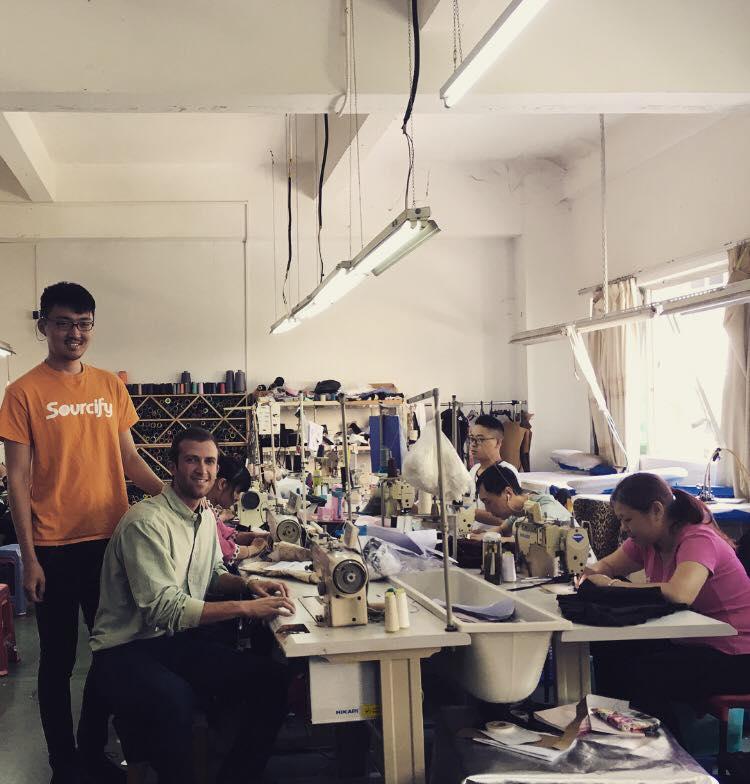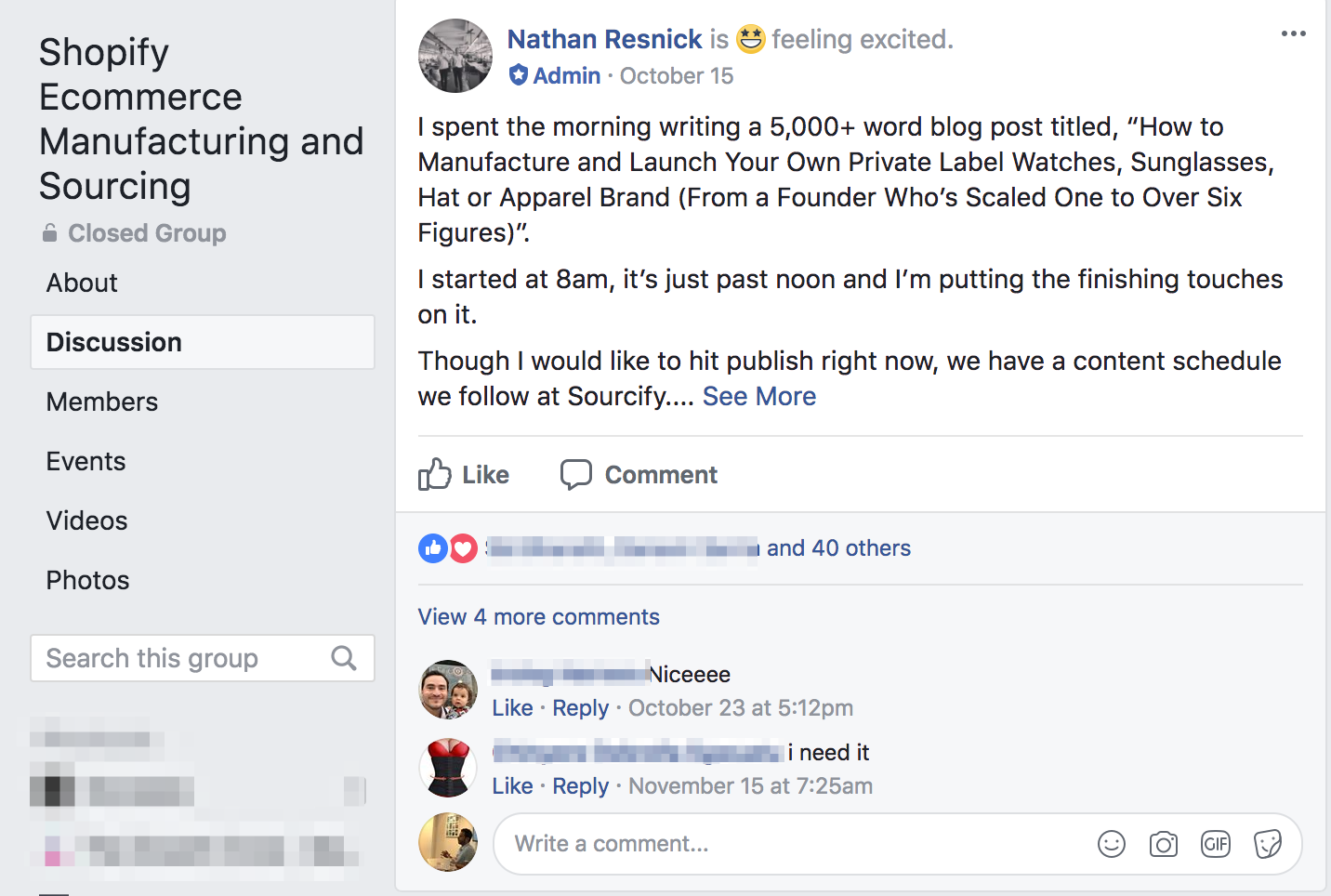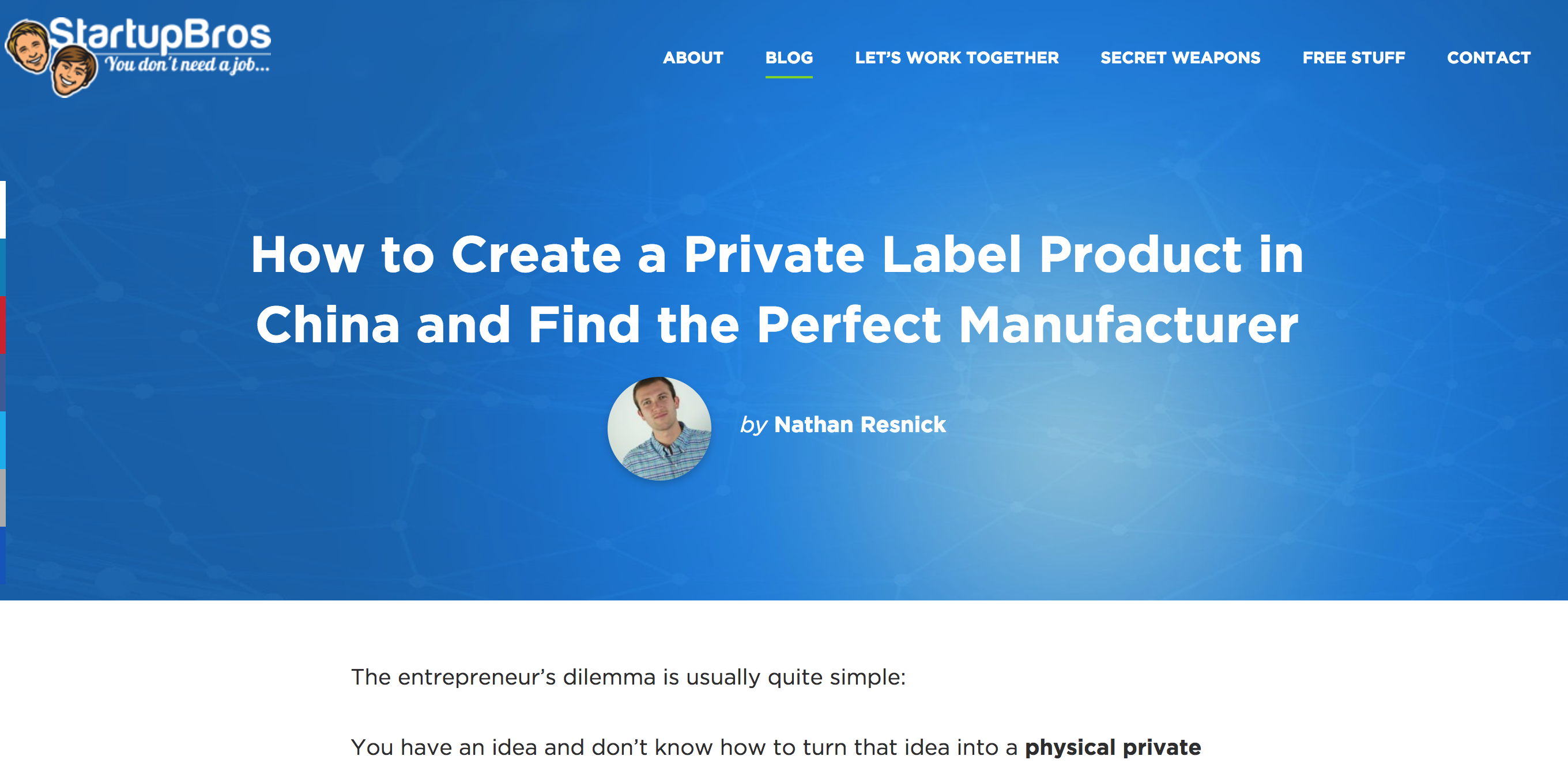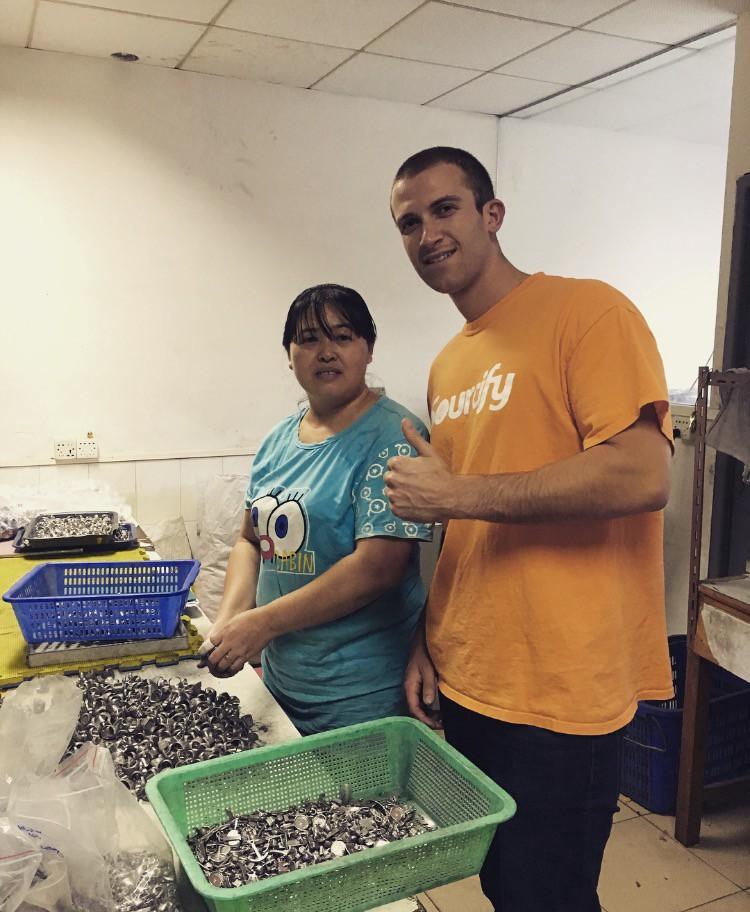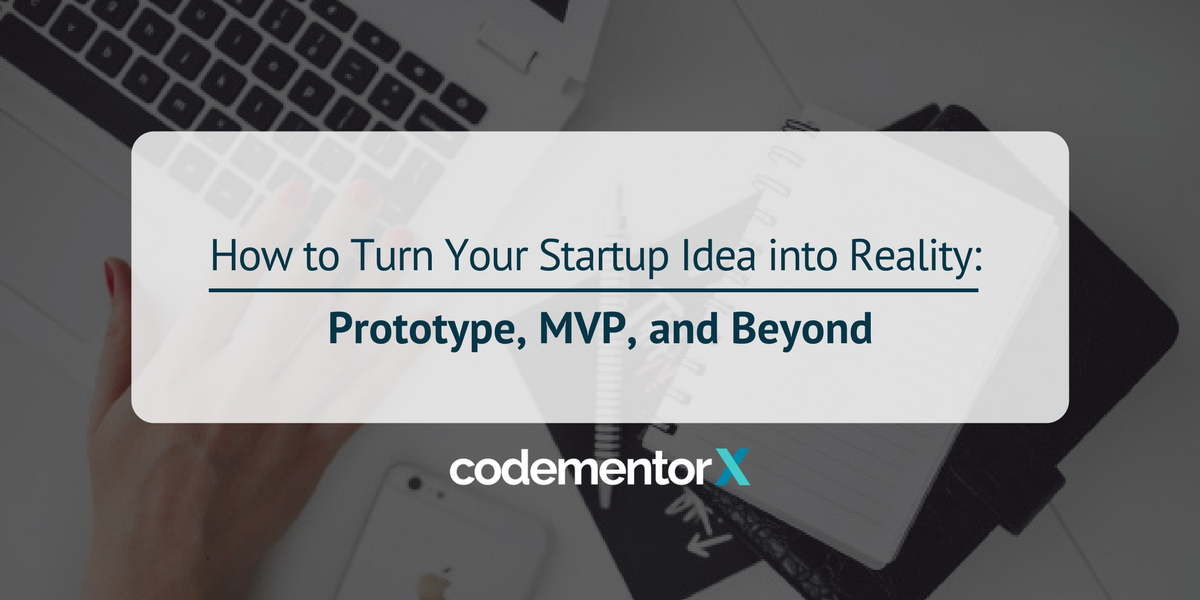Building a tech startup is hard for all founders, but for non-technical founders, the psychological challenge can be even more acute: from Entrepreneur to Forbes, non-technical founders are inundated with the message that they are at a sizable disadvantage when it comes to building software.
Many non-technical founders tell of how they were rejected by VC’s simply because they lacked technical expertise.
Yet, much of the advice written to aspiring, non-technical cofounders boils down to ‘find a technical cofounder’ or ‘learn how to code.’
For many non-technical founders, that can be demoralizing advice.
It’s simply not helpful if you can’t find a cofounder, don’t want a cofounder, or don’t want to waste hours of your time learning to code when you could be out validating your idea instead.
For this article, we interviewed Nathan Resnick, a non-technical founder who built three companies before the age of 23. He’s now focused on Sourcify, a company that makes bringing a product to life and cutting manufacturing costs easy.
Despite being a non-technical founder, Nathan just scored a new few hundred thousand dollar seed round for his software platform and is a finalist in the San Diego Connect 2017's "Most Innovative Product" awards. He did that by validating his business idea with a service first, and then building a team to create a software platform that automates the most time-consuming aspects of his business.
We honed in on the tactical details he used to get the company off the ground. In this post, he breaks down how to validate your business idea and what he learned while building a software company as a non-technical founder.
Note: We can help you find an experienced, vetted developer to help you ship your first product. Chat with us here.
How Nathan validated Sourcify by building a service business
Before Nathan launched Sourcify, he had the same concern as most of his fellow ecommerce business owners. Forging relationships with reputable factories "was the most difficult hurdle that we passed as an ecommerce company," he explained.
"Ecommerce sourcing and manufacturing, in general, is like this magic black box, because people don't want to share their supply chains. It's a massive barrier to entry to find the right factory to work with," he added.
His willingness to do the opposite — share his connections for a small fee — is what led him to found Sourcify.
As his reputation grew, more and more connections reached out to him to help them source their products. "People began to hit me up and say, ‘Nathan, can you produce products for me?’ and I basically became a sourcing agent."
Nathan tries sewing at one of the factories that his team vetted.
"After a few dozen introductions, I realized this is a really big problem that everyone faces when sourcing products. That's where the concept for Sourcify stemmed from: figuring out how we can automate and improve that sourcing process for both ecommerce companies and retail companies."
Rather than trying to automate the whole process and build software right away, Nathan decided to prove the value of his business first before reaching out to investors. "We started as a service that would email introduce you to the right factory, and that proved that people are willing to pay money to be introduced to factories that have been pre-vetted."
Where Nathan found his first clients
Online Communities
To gather those initial customers, "We started tapping into different communities on Facebook, on LinkedIn; going to different ecommerce events and really just starting to build a brand and ecommerce community interacting on different ecommerce forums," he said.
The trick to success with these online communities, Nathan explained, was to spend some quality time getting to know and help the people there. "The people that do best with these communities are the ones actively interacting with them. They don't go take a promotional approach, they provide, provide, provide. And then, maybe ask and introduce themselves," he added.
After participating in other Facebook groups for the past year with decent success, Nathan decided to start his own.
Round Up Articles
Another strategy he used to build traction was to write a "round up" article of twelve successful ecommerce entrepreneurs with coaching businesses. They were happy to do interviews with him for exposure in the media.
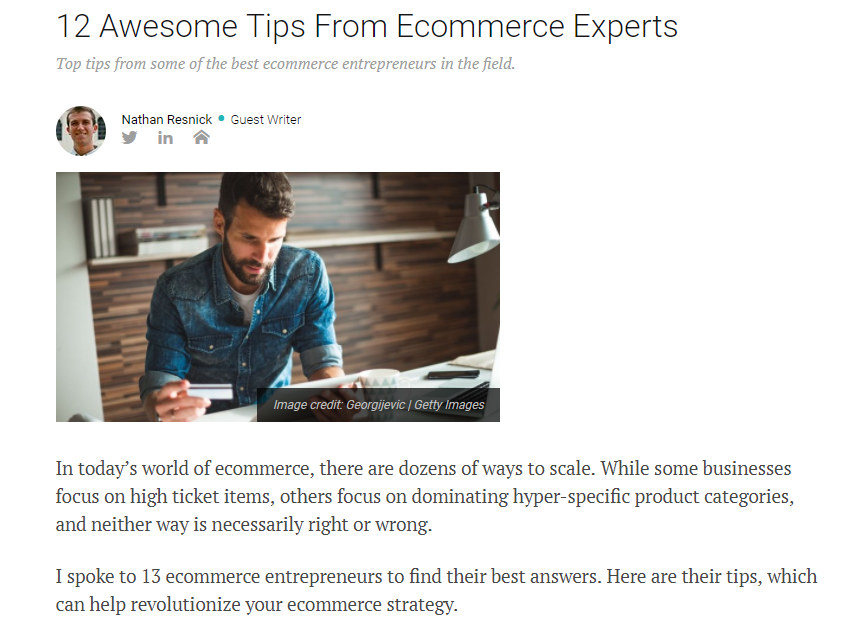
As Nathan put it,
I introduced myself and mentioned Sourcify briefly in the call," he explained. “But I wasn't pitching them on a partnership right off the bat. I was saying, look, I write on the side and I also run Sourcify, and I would be thrilled to see if there's time to talk about the article I'm writing and if there's synergy between us and what we do at Sourcify.
Guest Blogging
Finally, he also devoted time to landing guest blog posts with thought leaders and experts in ecommerce. "Even though they have, you know, a hundred posts when you search, for supply chain or sourcing or manufacturing there is almost nothing there. And so we fill a great void in the industry of ecommerce."
Those posts build traction with his target audience while strengthening his existing connections.
How he knew it was time for software
As Nathan proved business viability with a service business, he always knew that a software business was the end goal. "If I really wanted to create a scalable company in the sourcing industry, it had to be software driven and so that was always in mind," he explained.
In the early days, Nathan ran the business manually, driving traffic to a simple landing page, then personally vetting factories, confirming specifications, writing introductions. As it turned out, that experience gave him exactly the insight he needed to know what kind of software his company would need.
"I mean I knew the service wasn’t going to scale, number one because I wasn't sleeping," he laughed. While he knew building a larger team was an option, his processes were still clumsy.
"Imagine having to take specs from a client, putting the specs in your own database manually, storing them, sorting them, and then sending them out manually via email to an average of 5-10 factories that could potentially produce that product, and then having back and forth with each factory in terms of their capabilities, and then going ahead and making the introduction between a company and a factory," he gasped.
It was "a very manual process" that caused them to think about how they could automate “some of the back and forth between us, a client, and a factory.”
By the time he started approaching developers, he knew what aspects of their service he wanted to automate first.
What Nathan learned about building software as a non-technical founder
Once he had a rough idea of what he wanted, Nathan contacted a freelance developer to begin working on a beta version of the software. But he and the freelancer both made assumptions and mistakes that made the first attempt a complete failure.
Next, he tried bringing a non-technical cofounder on board; that didn’t work out either.
Fortunately, attempt #3 was a success: he identified a small team developers who were knowledgeable and committed enough to make Sourcify’s first software platform a success.
It took a few iterations before Sourcify had the software Nathan always wanted it to have, but here are his 3 key takeaways from the process.
1. Wireframe everything
Well before he approached investors, Nathan tried working with a freelance developer to get a beta version of Sourcify’s software off the ground.
In hindsight, Nathan explained, there were several things wrong with the undertaking. "It was a learning process," he admitted, “Because starting off, I didn't even know the difference between React and Angular and Java and HTML.”
"I hired a freelancer who was older and had good experience, but he was coding in a language - PHP - that I now know most people don't use for startups."
After dropping six thousand dollars on the project, he realized that it wasn’t working. Not only was the language inadequate for what he wanted to do, the platform "wasn't very useful, it didn't scale, and it didn't have a good UI/UX."’
Nathan wishes he had realized that "you really need to map out and wireframe your product, and understand all the functionalities."
"You can't just go and tell the developer, ‘Hey, here's the vision of what we want you to create, go create it.’ You're going to see a lot of developers who are great at coding, but they're honestly not great at determining product flow, user flow, and making a product that excites people."
While a wireframe alone couldn’t have saved that first attempt, it would have improved communication with his freelancer and provided better direction moving forward.
In later interactions with developers, Nathan was able to "map out exactly what should happen for someone to onboard themselves and join our platform, and what kind of messaging tools we wanted between the two."
That groundwork will allow them to add new layers of automation and roll out new features in the future instead of returning to repair basic functionality.
2. Don’t push for a technical cofounder
After cutting ties with his freelancer, Nathan searched for someone who could partner with him and take over all software development for Sourcify, i.e., become the technical cofounder and CTO of Sourcify.
"I met another guy who was more of a front end developer, but he had some full stack experience and could handle some back end work. We started working together and his designs were great; he was pushing the needle forward and we were collaborating pretty well," he recounted.
Unfortunately, the partnership wasn’t meant to be. "He had a family emergency and had to quit the company," he explained. This left Nathan in the lurch; without his technical cofounder, he couldn’t continue development.
He learned that "trying to find potential co-founders just because you want them to be a CTO can lead to a lot of problems." The programmer he hoped would be a cofounder ended up working with the company for just two months and in the long run, Nathan realized this developer wouldn’t have had the experience to build enterprise grade software.
3. Find technical experts to interview candidates
After parting ways with the programmer he had hoped would become a technical cofounder, Nathan decided to proceed without a replacement. Instead, he forged ahead with building a team of software developers.
The problem? He didn’t know how to evaluate the software developers who applied to work with him.
So, he looked for someone who could advise him. "I started connecting with people in the community here in San Diego, at EvoNexus, and through other mentorship programs."
Nathan was one of several entrepreneurs on a panel of sourcing experts at EvoNexus.
Once he was ready to hire someone, Nathan realized, "I need to have a CTO type of adviser to actually get on the phone and interview these guys." Once he had a shortlist of candidates for a lead developer, Nathan had his more tech-savvy mentors vet them.
That led to Nathan hiring his first full-time developer, who had an even better idea for screening candidates. Nathan didn’t want to waste anyone’s time interviewing candidates who weren’t really qualified for the position, so his new lead developer set up a coding test.
"Nowadays, if I'm looking at a developer that looks good, I'll just say, ‘Hey, can you take this coding test?’ And if he passes it and it looks good, then I'll send it to a developer." Once a candidate makes it through the coding test and an interview with one of Nathan’s developers, Nathan will have a conversation with the candidate and make a final decision.
He’s successfully used this system to add several more team members. When evaluating candidates, he emphasizes three things. "It's technical skill set, it's culture, and it's commitment."
In summary, he said, "try to understand if they're actually qualified for this position, and then give them a coding test."
Final advice
In general, Nathan advised, "Don’t rush into anything. Map out milestones. Even today, with our lead developer, we go over [our product] about once a week to see where we're at because you need to know where you're at in terms of your product development."
If you’re a non-technical founder, Nathan’s experience distills to a few key points:
-
Validate your idea on the market before approaching investors.
-
Learn how to wireframe your ideas so that developers can execute them.
-
Seek out mentors or experts who can help you make smart hires.
Nathan doesn’t think Sourcify would have been possible without that crucial first step of validating his idea. Had he sought funding before building a service business, VC’s wouldn’t have given him the time of day.
Instead, he came to them with a viable business plan and $10-20k in sales/month as proof that Sourcify could succeed. As a result, "Investors got excited by it and saw the vision and passion and traction that we had. They were willing to invest on the fact that we would turn this service business into a software."
"I validated the point that people were willing to pay for this initial service of just connecting them to the right factory."
After that, it was a matter of building the right team and learning how to communicate his ideas with them.
Note: We can help you find an experienced, vetted developer to help you ship your first product. Chat with us here.


